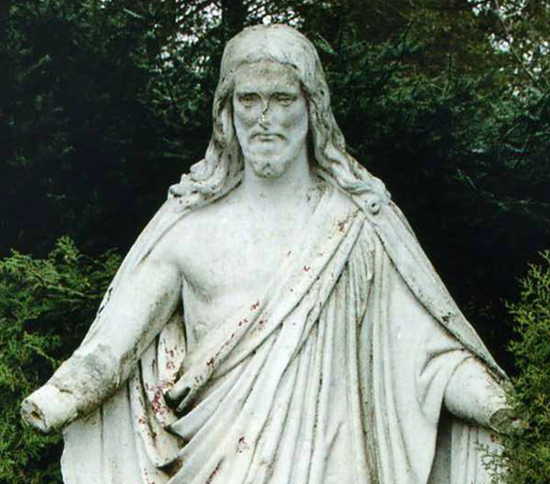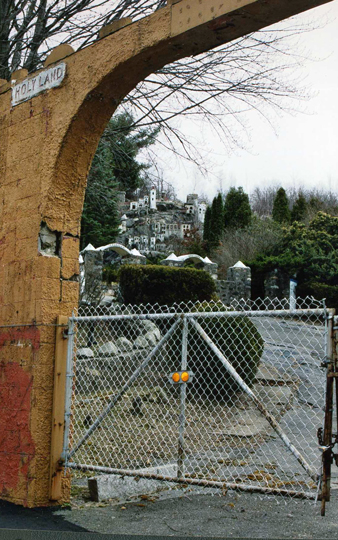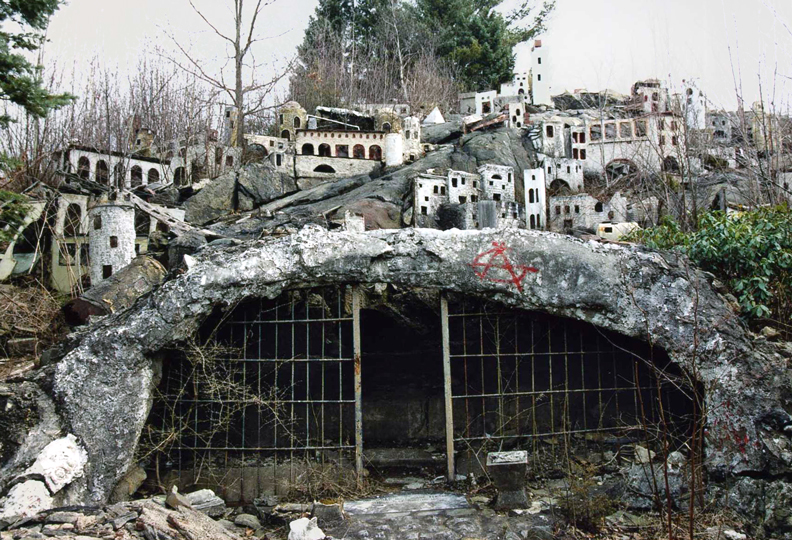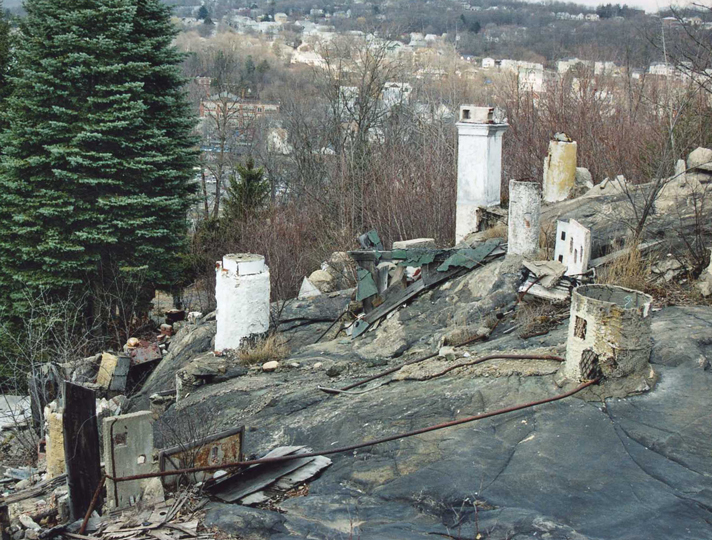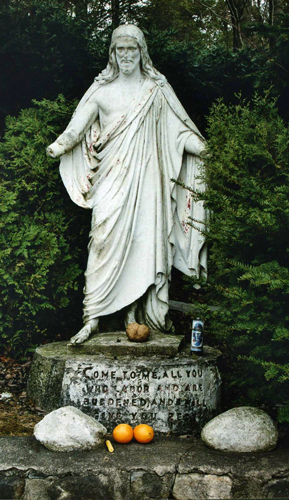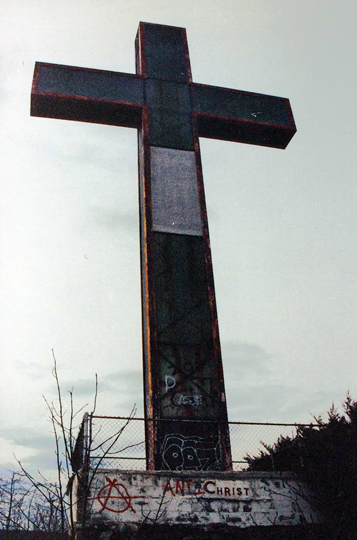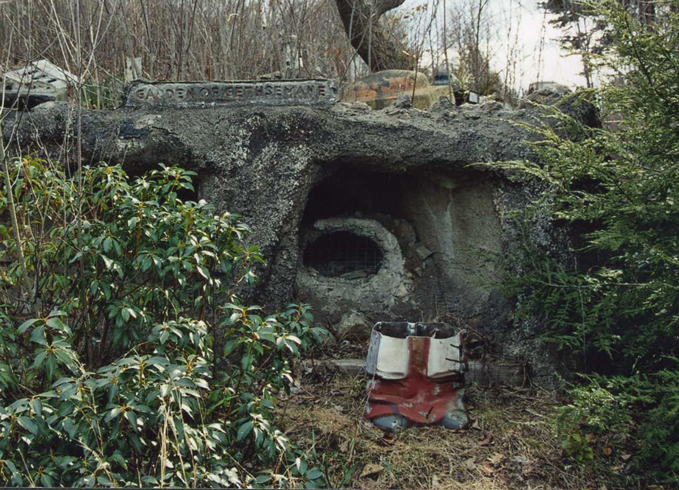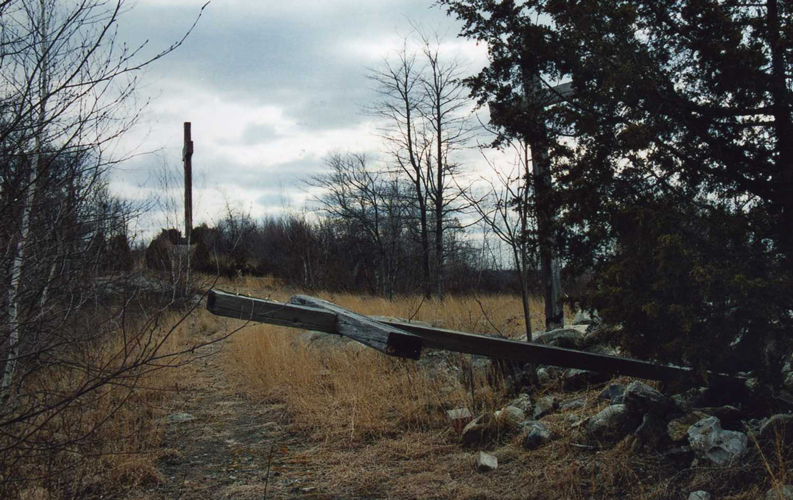The ruins of Holyland have been a cyber-staple since the early days of the internet. Often, they appear on "weird Americana" sites which, under their layer of faux appreciation, radiate a sense of superior sophistication when confronting non-ironic and artistically-naive expressions of belief.
John Greco, a Waterbury, Connecticut lawyer and Catholic evangelist, created Holyland on the rocky ledges of Pine Hill in 1956. Eventually his devotional park included a scale model Bethlehem, an army of statuary, catacombs, a chapel, a gigantic fiberglass bible, and a five story illuminated cross that still shines in the night sky above I-84. During its peak in the 1950s and 1960s, Holyland constantly added new tableaux, model buildings, and giant tablets bearing biblical quotations and drew as many as 45,000 visitors annually. But in 1984 the eighty-nine year old Greco closed the park, although he continued to live on the grounds until a week before his death in 1986. Afterwards Holyland, which passed to a Catholic religious order, was extensively vandalized. Despite periodic rumors of renovation, the catacombs were sealed in 1999 and the front gates remain locked.
While Holyland may be officially closed, it is scarely deserted. On the chilly overcast Saturday before Easter, a family with children was walking the overgrown stations of the cross trail, while a couple took turns photographing each other amid the tumbled buildings of Bethlehem. The wind whipped unintelligible voices through the overgrown evergreens at the replica of Calvary, giving a conspiritorial air to what were probably casual conversations. A neat platoon of empty bottles stood beside the Temple of the Rock.

